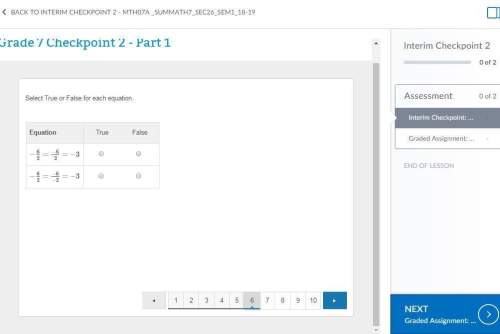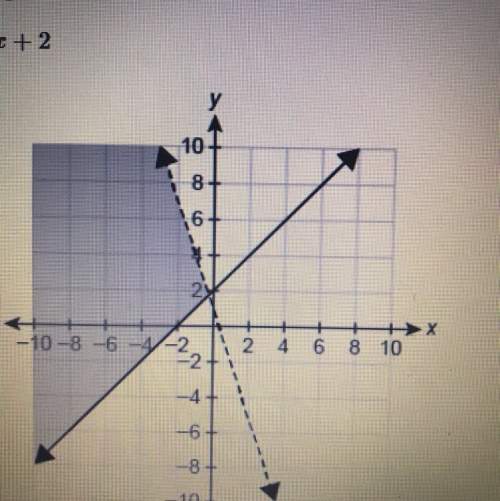Teresa has two 6-foot pieces of ribbon.
One piece she cuts into -foot pieces.
The other piece...

Mathematics, 12.04.2021 17:00 derekcalhoun4943
Teresa has two 6-foot pieces of ribbon.
One piece she cuts into -foot pieces.
The other piece she cuts into - foot pieces.
How many foot pieces can she cut from
one piece of ribbon? Explain.

Answers: 3


Other questions on the subject: Mathematics

Mathematics, 21.06.2019 17:30, kruzyoungblood8
When a rectangle is dilated, how do the perimeter and area of the rectangle change?
Answers: 2

Mathematics, 21.06.2019 19:20, joelpimentel
Which number line represents the solution set for the inequality - x 24?
Answers: 3

Mathematics, 21.06.2019 22:30, renaudciera
Use the following statements to write a compound statement for the conjunction or disjunction. then find its truth value. p: an isosceles triangle has two congruent sides. q: a right angle measures 90° r: four points are always coplanar. s: a decagon has 12 sides. a) a right angle measures 90° or an isosceles triangle has two congruent sides; true. b) a right angle measures 90° and an isosceles triangle has two congruent sides; true. c) a right angle measures 90° and an isosceles triangle does not have two congruent sides; false. d) a right angle measures 90° or an isosceles triangle does not have two congruent sides; true.
Answers: 3

Mathematics, 22.06.2019 03:00, kittenlover5031
In this problem, we explore the effect on the standard deviation of multiplying each data value in a data set by the same constant. consider the data set 14, 6, 8, 15, 15. (a) use the defining formula, the computation formula, or a calculator to compute s. (round your answer to one decimal place.) s = 4.28 (b) multiply each data value by 3 to obtain the new data set 42, 18, 24, 45, 45. compute s. (round your answer to one decimal place.) s = 12.83 (c) compare the results of parts (a) and (b). in general, how does the standard deviation change if each data value is multiplied by a constant c? multiplying each data value by the same constant c results in the standard deviation remaining the same. multiplying each data value by the same constant c results in the standard deviation being |c| times as large. multiplying each data value by the same constant c results in the standard deviation increasing by c units. multiplying each data value by the same constant c results in the standard deviation being |c| times smaller. (d) you recorded the weekly distances you bicycled in miles and computed the standard deviation to be s = 3.8 miles. your friend wants to know the standard deviation in kilometers. do you need to redo all the calculations? yes no given 1 mile ≠1.6 kilometers, what is the standard deviation in kilometers? (enter your answer to two decimal places.)
Answers: 1
You know the right answer?
Questions in other subjects:

History, 07.10.2019 04:30


History, 07.10.2019 04:30


Biology, 07.10.2019 04:30

English, 07.10.2019 04:30




Biology, 07.10.2019 04:30





